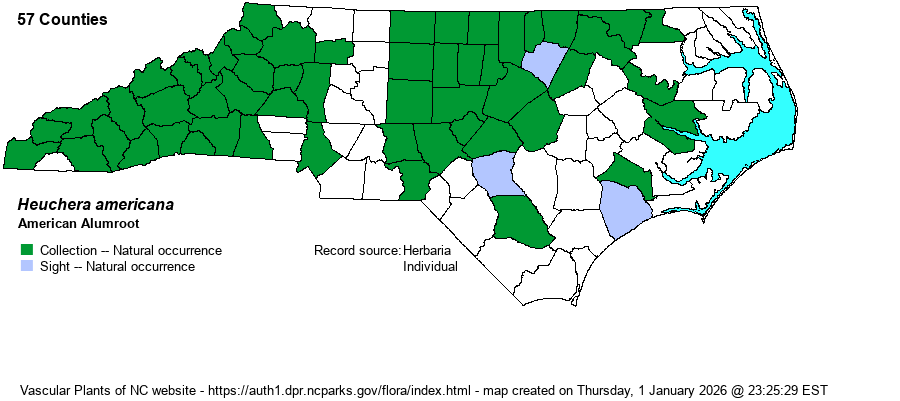| taxonName | relationship | relatedTaxonName | relatedTaxonRefText | relComments |
|---|
|
|
|
| Heuchera americana | > | Heuchera americana var. americana | Fernald (1950) | |
| Heuchera americana | > | Heuchera americana var. americana | Gleason (1952) | |
| Heuchera americana | > | Heuchera americana var. americana | Flora of West Virginia | |
| Heuchera americana | = | Heuchera americana var. americana | Flora of North America (1993b, 1997, 2000, 2002a, 2002b, 2003a, 2004b, 2005, 2006a, 2006b, 2006c, 2007a, 2009, 2010) | |
| Heuchera americana | = | Heuchera americana var. americana | | |
| Heuchera americana | = | Heuchera americana var. americana | | |
| Heuchera americana | = | Heuchera americana var. americana | | |
| Heuchera americana | = | Heuchera americana var. americana | | |
| Heuchera americana | = | Heuchera americana var. americana | Soltis in Kubitzki, Bayer, & Stevens (2007). The keys partly adapted from Wells (1984). | |
| Heuchera americana | > | Heuchera americana var. heteradenia | Fernald (1950) | |
| Heuchera americana | > | Heuchera americana var. subtruncata | Fernald (1950) | |
| Heuchera americana | > | Heuchera americana var. brevipetala | Gleason (1952) | |
| Heuchera americana | > | Heuchera americana var. brevipetala | Soltis in Kubitzki, Bayer, & Stevens (2007). The keys partly adapted from Wells (1984). | |
| Heuchera americana | < | Heuchera americana | Radford, Ahles, and Bell (1968) | |
| Heuchera americana | < | Heuchera americana | Wofford (1989) | |
| Heuchera americana | > | Heuchera calycosa | Small (1933, 1938) | |
| Heuchera americana | > | Heuchera curtisii | Small (1933, 1938) | |
| Heuchera americana | > | Heuchera lancipetala | Small (1933, 1938) | |
| Heuchera americana | > | Heuchera americana var. typica | Soltis in Kubitzki, Bayer, & Stevens (2007). The keys partly adapted from Wells (1984). | |
| Heuchera americana | > | Heuchera americana var. calycosa | Soltis in Kubitzki, Bayer, & Stevens (2007). The keys partly adapted from Wells (1984). | |
| Source: Weakley's Flora |

